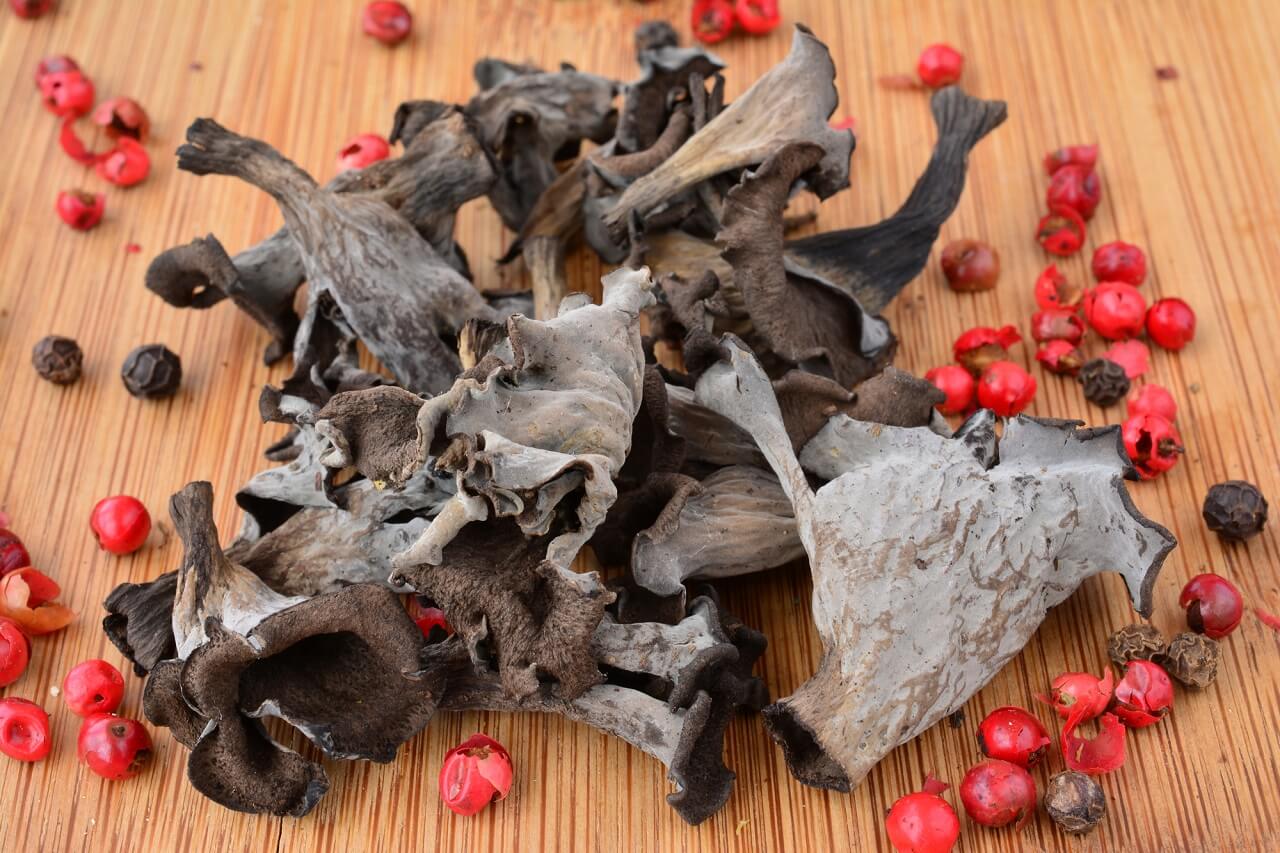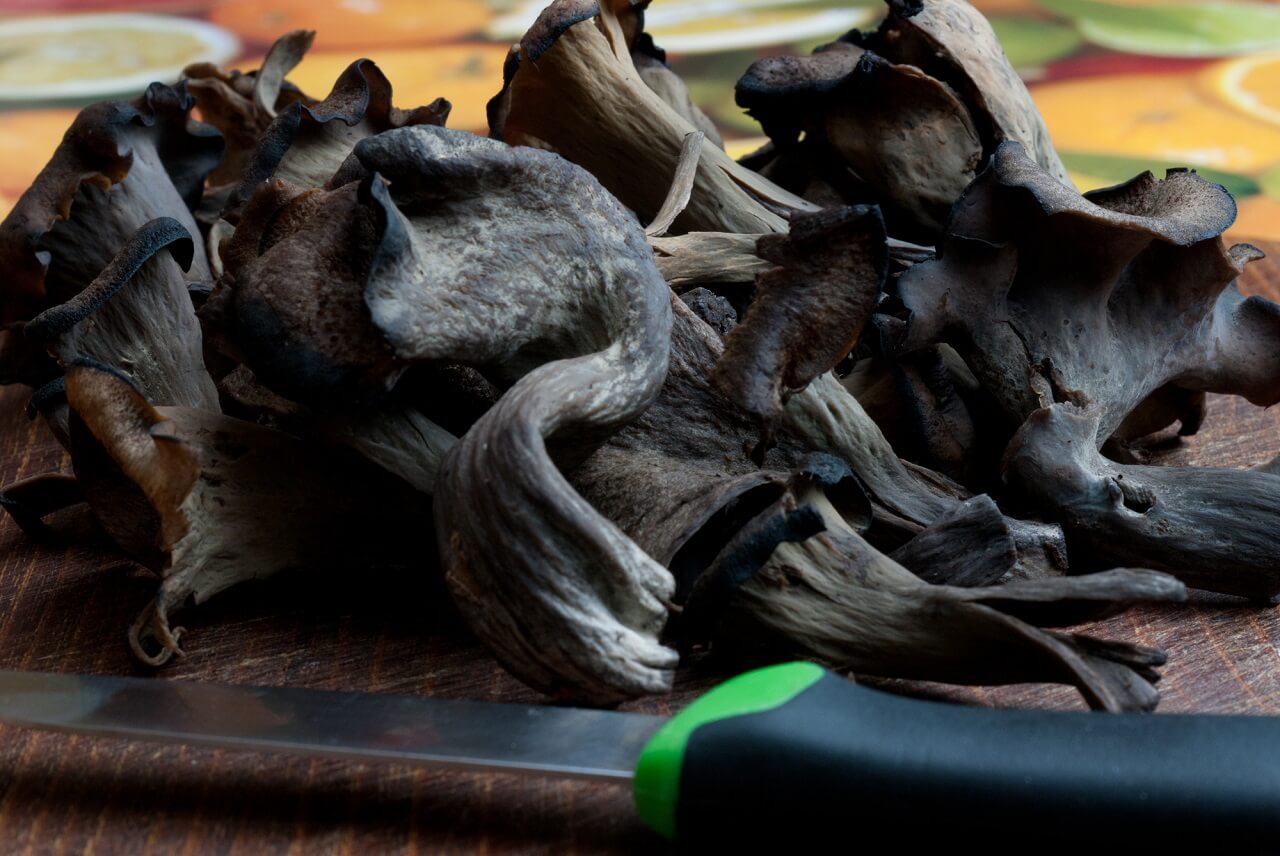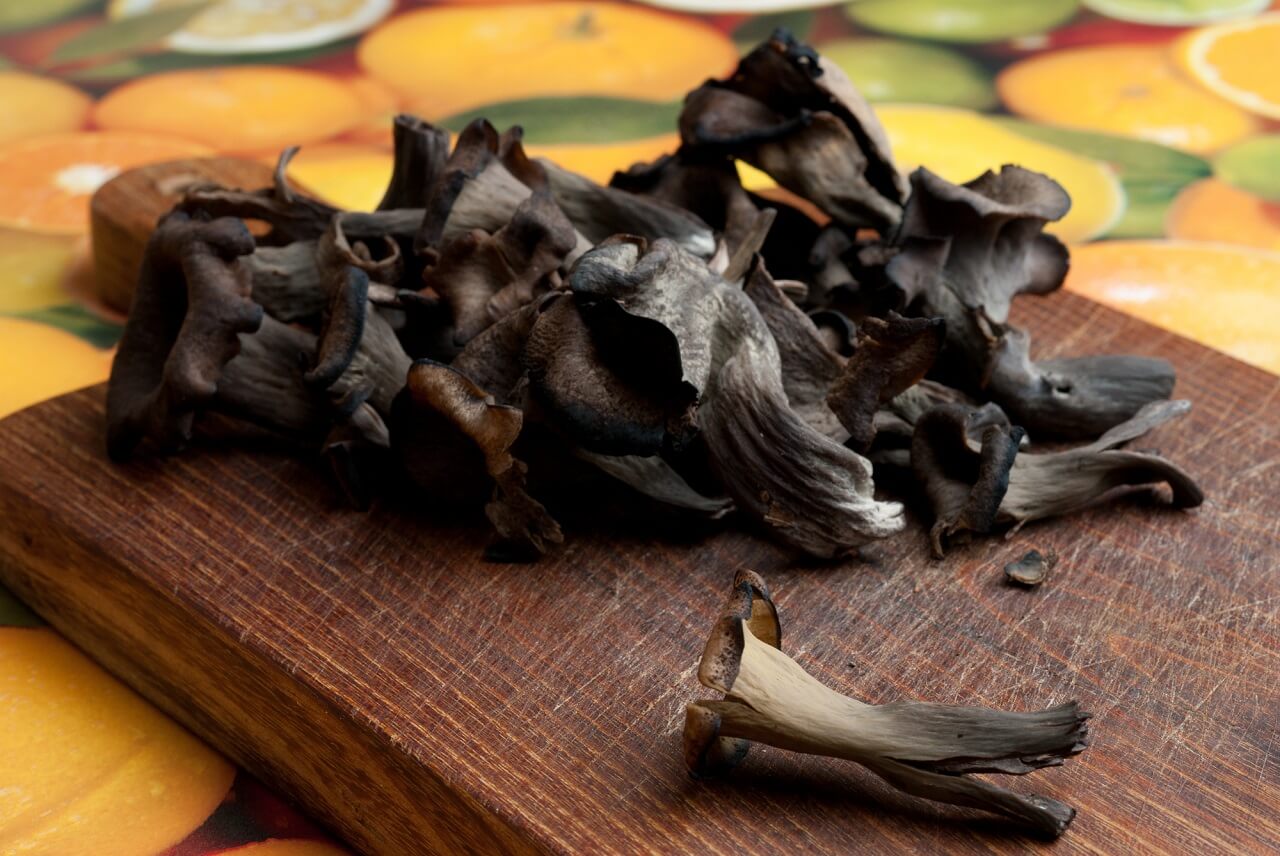So, you just came home with a basketful of black trumpets; what should you do next? If you’re wondering how to store black trumpet mushrooms, keep reading! In this article, we’ll discuss the various ways you can preserve your harvest and enjoy it throughout the year.
What You'll Learn Today
How Do You Preserve Black Trumpets?

The best way to preserve black trumpets long-term is to dry them; though they can be temporarily stored in the fridge or freezer, they won’t keep as well or as long. There are various ways to dry black trumpets, which we’ll talk about in greater detail later on in this article.
Black trumpets keep their flavor well when they’re dehydrated, and they can be stored for up to a year.
There are so many things you can do with dehydrated black trumpets! They can be reconstituted and added to various recipes, from pasta to pizza to stir fry.
You can also grind up your dried black trumpets and use the powder as a seasoning. It provides a wonderfully rich and unique flavor to soups, stews, sauces, and just about anything else you can think of.
How Long Do Black Trumpets Last in the Fridge?
If you want to keep your black trumpets in the fridge, you can do so for a few days up to a week. Make sure the fridge is set at 39 or 40 degrees Fahrenheit, as the mushrooms will keep better at cooler temperatures.
For longest storage life, store them in an open resealable bag or in a glass dish with a towel over it.
Check on your mushrooms daily as long as they are kept in the fridge, and discard any that show signs of beginning to go bad. Use them or dry them as soon as possible because the fresher they are, the better quality they will be.
If you want to store them in the freezer, it’s best to steam or saute them first. Flash freeze them in a single layer, and once they are frozen, pack them into freezer safe containers.
Frozen black trumpets will keep for a month or two in the freezer. Keep an eye on them and watch for signs of freezer burn.
How to Clean Black Trumpets

There is a lot of disagreement among mushroom lovers. Some say you should never wash them because they absorb the wash water, but others say that washing is necessary to remove any dirt, grime, or bugs on the mushrooms.
Whether you choose to wash them with water or not, there are a few different ways you can clean your black trumpets before storing them.
Use a Brush
Brushing away the excess dirt can sometimes eliminate the need to wash these mushrooms. Even if you decide to wash them afterward, dry brushing can remove pieces of hard, stuck-on dirt and debris so you don’t have to wash the shrooms as long as you normally would.
Use a mushroom or pastry brush to gently scour the dirt away. You can also use an old toothbrush, or simply rub your thumb across the surface of the mushroom.
To make sure you get them thoroughly cleaned, break or cut apart your black trumpets and clean inside the stems. The stems are hollow and can hold a surprising amount of dirt and grime.
The Rinse Method
If you want to use water to wash your black trumpets, you can either rinse them under running water or dunk them in a bowl. The rinse method will take longer but may get each mushroom cleaner.
Taking each piece one at a time, briefly hold it under running water, scrubbing away any visible dirt with your thumb or a brush. You could also wash several at a time by placing them in a colander and tossing them under the water source, but this won’t clean them as well.
Make sure you rinse the mushrooms long enough to remove excess dirt but not so long that they become bloated or overly soft from absorbing the water.
The Dunk Method
Instead of rinsing them under flowing water, you could dunk your mushrooms in a bowl of clean water and swish them around. You may want to transfer them to a clean bowl of water once or twice.
You’ll need to work quickly if you use this method. Make sure not to leave them in the water too long or they will absorb too much water and take longer to dry.
Let Them Drain
After washing the mushrooms, place them on a towel, a screen, in a salad spinner, or on a dish mat in a sunny window. The goal is to remove as much water as possible, then let them air-dry thoroughly.
How to Dry Black Trumpets

Before dehydrating your black trumpets, you’ll want to make sure they are cool and have been allowed to air dry after washing. Placing them in the fridge for a little while will help them cool down and dehydrate better.
You can dehydrate black trumpets in a dehydrator, by air-drying them, or by letting them dry in the oven. Let’s take a look at each method.
In a Dehydrator
If your dehydrator has a temperature setting, a range of 135 to 150 degrees Fahrenheit is best. Going with a slightly higher or lower setting is also okay.
If there isn’t a temperature setting on the dehydrator, place it on the “vegetable” setting or simply keep an eye on it so you don’t overdry the mushrooms.
Drying time will vary depending on how large the mushroom pieces are. Thinly sliced, dry mushrooms may dehydrate easily in a couple of hours. Whole mushrooms or large pieces that haven’t been properly dried after washing may take much longer.
You’ll know they are done when they snap like chips and show no signs of moisture. Allow the black trumpets to cool at room temperature for a few minutes, then transfer them to airtight jars.
Air-Drying
People have been air drying mushrooms since long before modern dehydrators were invented. There are many different ways to air dry your black trumpets, including:
- On a mat. Spread uniformly sized mushroom pieces on a towel or screen mesh and place them in a sunny window.
- Hanging in a bunch. You could slice them and string them up using a needle and thread, or simply tie several of the whole mushrooms together and hang them upside down.
- On a countertop. Allow them to sit in a cool, dry place, such as a countertop or a pantry shelf.
The mushrooms will dry more quickly if they are sliced thin and kept away from high humidity. Blowing a fan on them may also help speed up the drying process.
Air drying will most likely take longer than drying in a dehydrator. Move the mushrooms to jars once they are fully dry, show no signs of moisture or softness, and snap like chips under pressure.
How to Dry Black Trumpets in the Oven
Set your oven on the lowest setting–most don’t go below 170 degrees Fahrenheit. Spread your mushrooms evenly on oven-safe racks or pans.
It’s best if the air can circulate, so using a pizza pan with holes in it is great if you have one. If not, you can use a plain cookie sheet.
Leave the oven door cracked open to keep the temperature down and allow moisture to escape.
Dehydrating in the oven may not take as long as using a dehydrator, but be careful not to leave the mushrooms in too long. You don’t want to cook them.
Once they are free of moisture and snap easily, remove them from the oven and let them cool for a few minutes, then move them to airtight jars and keep in a cool, dry place.
Check out the following video to get an idea of how dried black trumpet mushrooms should look and sound.
Conclusion
You can store black trumpet mushrooms in the fridge, freezer, or dehydrated on the shelf. Dehydrated black trumpets will keep the longest, as you can store them at room temperature for up to a year.
Dehydrated black trumpet mushrooms can last longer, but I wonder whether they taste better than those stored in the fridge or freezer?